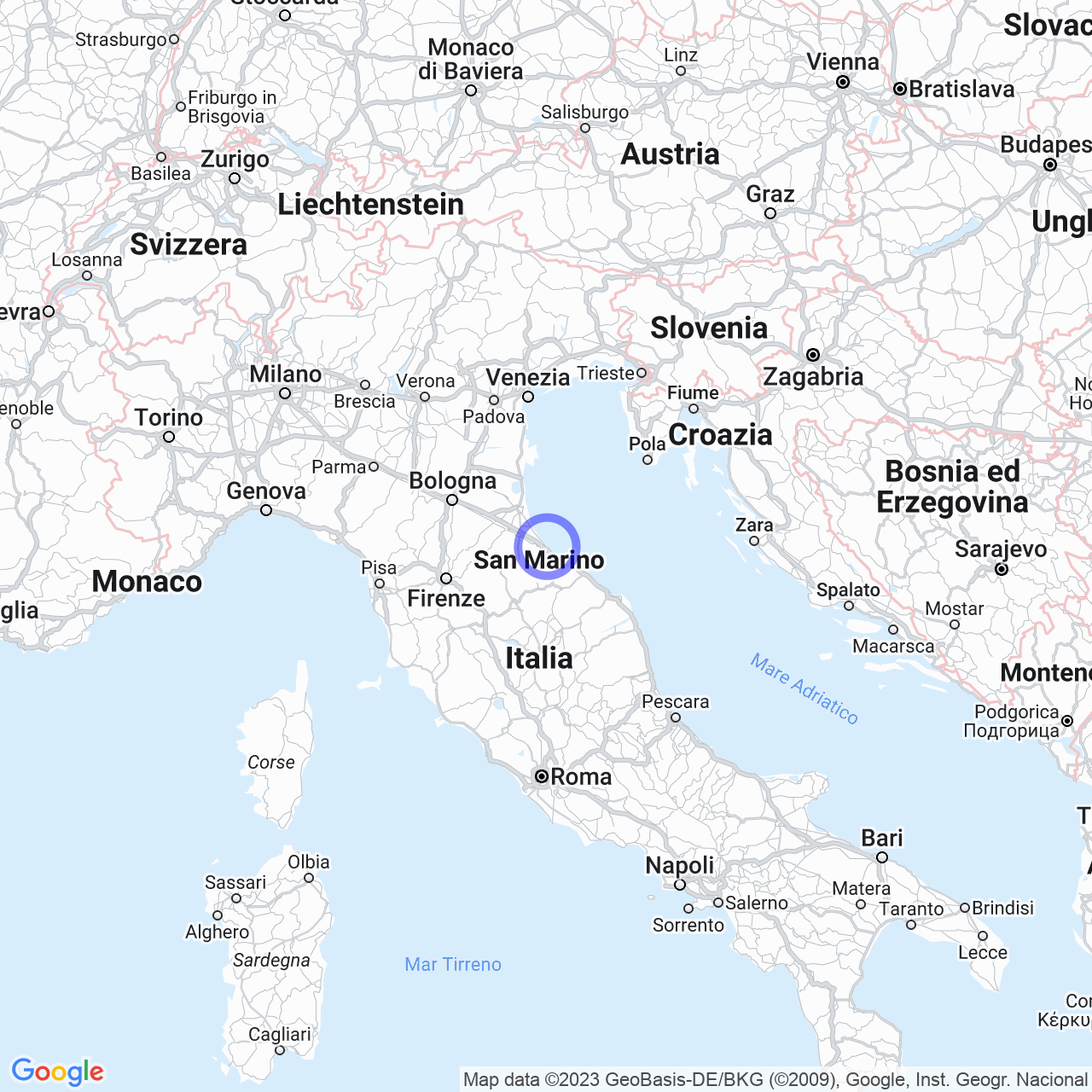Rimini
Rimini: the city and its history
Rimini, or ''Rémin'' as it is called in the Romagnol language, is an Italian city located on the Romagna Riviera along the coast of the Upper Adriatic. With a population of 149,240 inhabitants, it is the capital of the Province of Rimini, located in the Emilia-Romagna region.
The city has a great tourist tradition dating back to 1843, when the first bathing resorts in Italy were inaugurated. Rimini is located in a strategic position, at the southernmost point of the Po Valley. Its municipal territory extends for 135.71 km² and is bordered by other cities such as Bellaria-Igea Marina, San Mauro Pascoli, Santarcangelo di Romagna, Verucchio, Serravalle, Coriano, and Riccione.
Rimini's rich history dates back to ancient times. The city was founded by the Romans in 268 BC and became an important communication center between the north and south of the peninsula throughout the Roman domination period. Important monuments were erected by Roman emperors, many of which are still visible today. Later, Rimini was a fiefdom of the Malatesta family, and the court of Sigismondo Pandolfo Malatesta was one of the liveliest cultural and artistic centers of the time, hosting artists such as Leon Battista Alberti, Piero della Francesca, Roberto Valturio, and Matteo de' Pasti.
The physical geography of Rimini
Rimini occupies an attractive position in the southwest of the Po Valley. Although it is still in the Po Valley, the city is surrounded to the southwest by low hills, which are green and lush throughout the year. These hills are cultivated with vineyards, olive groves, and orchards, and are dominated by elegant villas. Some of the most important hills are Covignano (153 m), Vergiano (81 m), San Martino monte l'Abate (57 m), and San Lorenzo in Correggiano (60 m).
The hills are a natural connection between the flat area of Rimini, originated by the river deposits of the Marecchia and Ausa (stream), and a series of higher hills that rise towards the Romagna Apennines. The Marecchia River, one of the main watercourses in the Rimini area, flows in a very wide gravel bed and flows into the Adriatic through a bypass between Santa Giuliano Mare and Rivabella. The river was subject to periodic floods that could cause flooding at its mouth. For this reason, it was diverted north of the city. Similarly, the Ausa stream, which constituted the eastern border of Rimini for centuries, was diverted after World War II, and its bed was transformed into an urban park.

Rimini's beach
Rimini boasts a fine sandy beach that is 15 km long and up to 200 m wide. One of the attractions of the city is its beach, with crystal-clear sea and golden sand. The beach is interrupted only by the mouths of water courses and slopes very slowly towards the sea.
Conclusions
Rimini is a city that has a lot to offer: a long history dating back to ancient times, low hills covered with vineyards and orchards, a majestic river, and a golden sandy beach. The city is internationally known as a summer tourist destination thanks to its bathing resorts. If you're planning a summer vacation, why not choose Rimini as your next destination?
